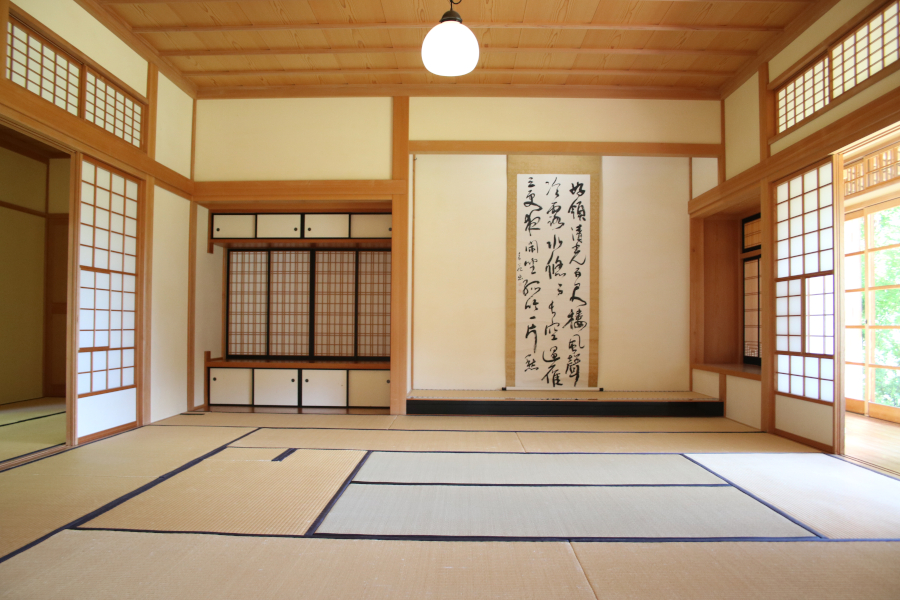In the domain of conventional Japanese culture, few components are as famous and imbued as the tatami tangle. These straightforward however flexible floor covers have been an indispensable portion of Japanese homes for centuries, exemplifying standards of effortlessness, concordance, and social character.
From their humble beginnings as rice straw mats to their cutting-edge incarnations as images of refined living, tatami mats offer an intriguing glimpse into the wealthy embroidered artwork of Japanese history and aesthetics.
The History and Meaning of Tatami Mats

The beginnings of tatami mats can be traced back to antiquated Japan, where they were at first utilized as versatile floor covers for seating and resting.
Made from firmly woven rice straw, these mats are given a separator and consolation on the hard-packed soil floors of conventional Japanese homes, also known as Japanese floor mattress. Over time, tatami mats got to be bigger and more standardized, advancing the measurements that are still utilized today.
How are Tatami Mats Made by Hand?
One of the most particular highlights of tatami mats is their development, which comprises a center of compressed rice straw wrapped in a woven surge covering.
This special combination of materials gives a firm, however padded surface that is perfect for sitting, resting, and strolling unshod. In conventional Japanese homes, Japanese floor mattresses are laid edge to edge, covering the whole floor of a room and making a consistent, bound-together space.
Social Importance of Japanese Floor Futon Mattresses

Beyond their down-to-earth benefits, moreover hold profound social importance in Japan. In conventional Japanese engineering, the number and course of action of mats in a room are carefully endorsed concurring with custom and chain of command.
For illustration, a standard Japanese room, known as a washitsu, is ordinarily measured by the number of tatami mats it contains. The measure and format of these rooms are planned to advance agreement and adjust, reflecting conventional Japanese values of effortlessness and order. In expansion to their social significance, tatami mats moreover play a part in Japanese aesthetics and planning.
The characteristic materials and moderate stylish of tatami mats are prized for their straightforwardness and style, impacting different craftsmanship shapes such as ikebana (bloom organizing), bonsai (smaller-than-expected tree development), and conventional Japanese engineering.
The Cultural Significance of Tatami in Japanese Homes
The social importance of tatami mats / Japanese floor futon mattresses amplifies past engineering to include different viewpoints of day by day life in Japan. For illustration, sitting or stooping on tatami mats, known as seiza, is a necessary portion of conventional Japanese behavior.
Whether taking part in a tea ceremony, going to a formal occasion, or accepting visitors domestically, Japanese individuals frequently sit on tatami mats to illustrate regard and humility.
Despite their conventional roots, tatami mats proceed to advance and adjust to the present-day world. Nowadays, tatami mats are accessible in an assortment of materials and plans, counting manufactured strands, froth centers, and secluded development.
These advanced translations offer more prominent toughness, comfort, and customization alternatives whereas still capturing the quintessence of conventional tatami craftsmanship.
Conclusion
The convention of tatami speaks to much more than fair floor covering – it is a reflection of Japanese culture, history, and aesthetics. From their humble beginnings in old Japan to their presumed significance in cutting-edge society, Japanese floor mattresses serve as an image of straightforwardness, agreement, and social personality.
Whether utilized in conventional Japanese homes, modern society, or social ceremonies, Japanese floor futon mattresses proceed to motivate and charm individuals around the world, welcoming us to investigate the wealthy embroidered artwork of Japanese culture through the focal point of a basic sleeping floor mattress.
FAQs
1. Question: What are floor mattresses commonly known as in Japanese culture?
Answer: Floor mattresses are commonly known as “futons” in Japanese culture.
2. Question: How are futons utilized in Japanese households?
Answer: Futons are utilized for resting and are regularly rolled out on the floor at night and rolled up and stored during the day to save space.
3. Question: Are there any social considerations when utilizing futons?
Answer: Yes, in Japanese culture, it is standard to overlay and store the futon during the day to keep the living space flexible and open.





